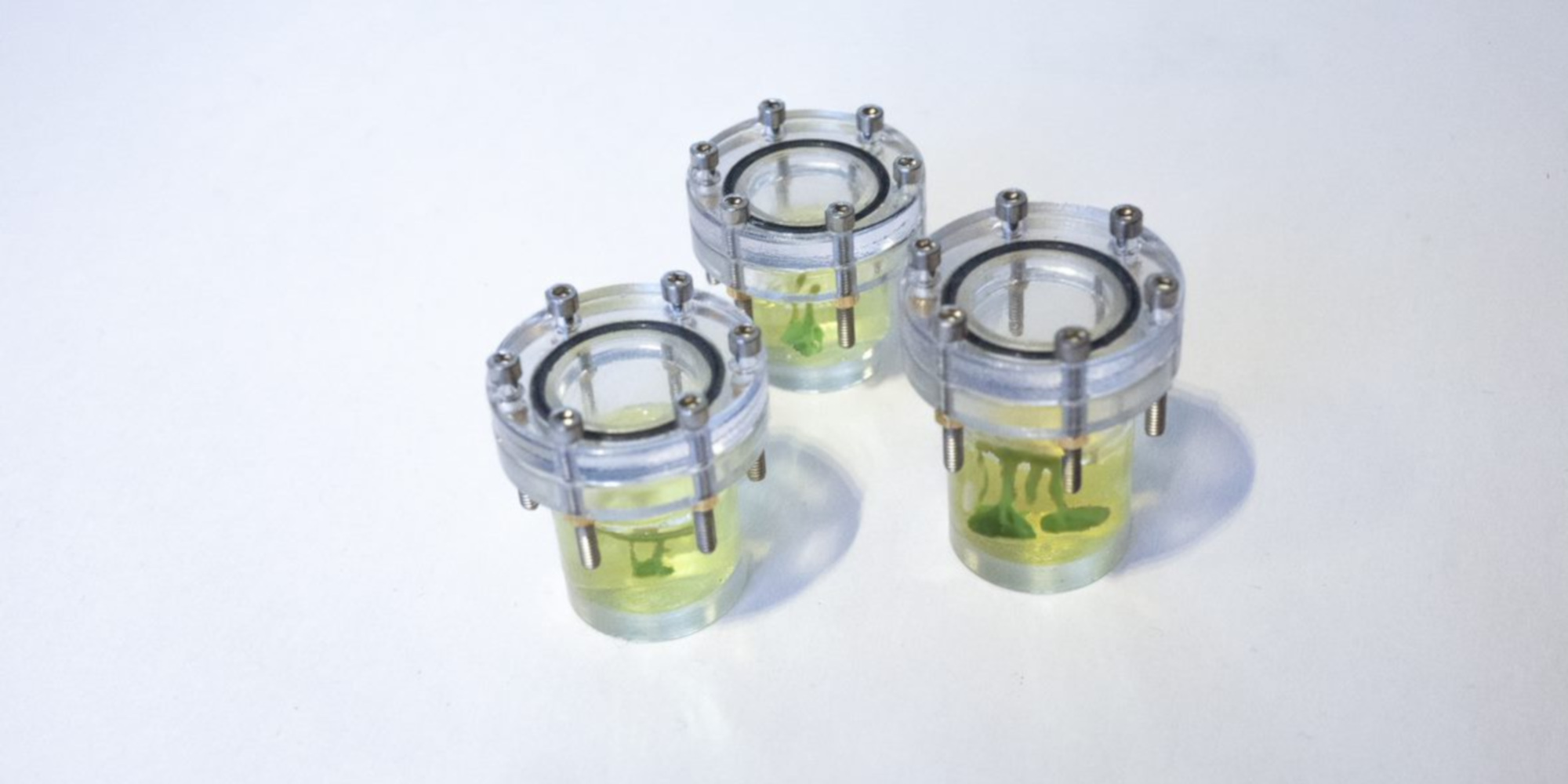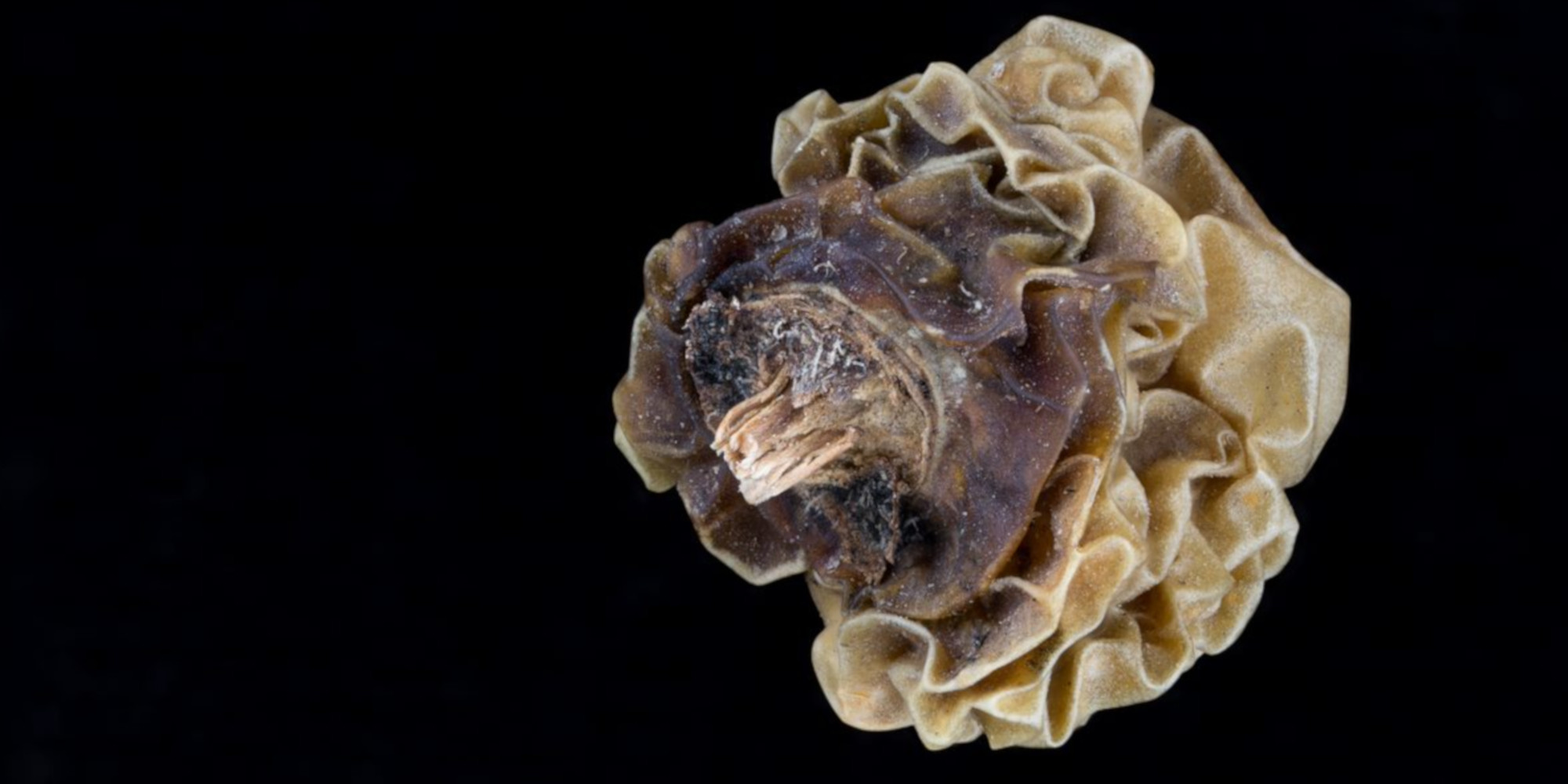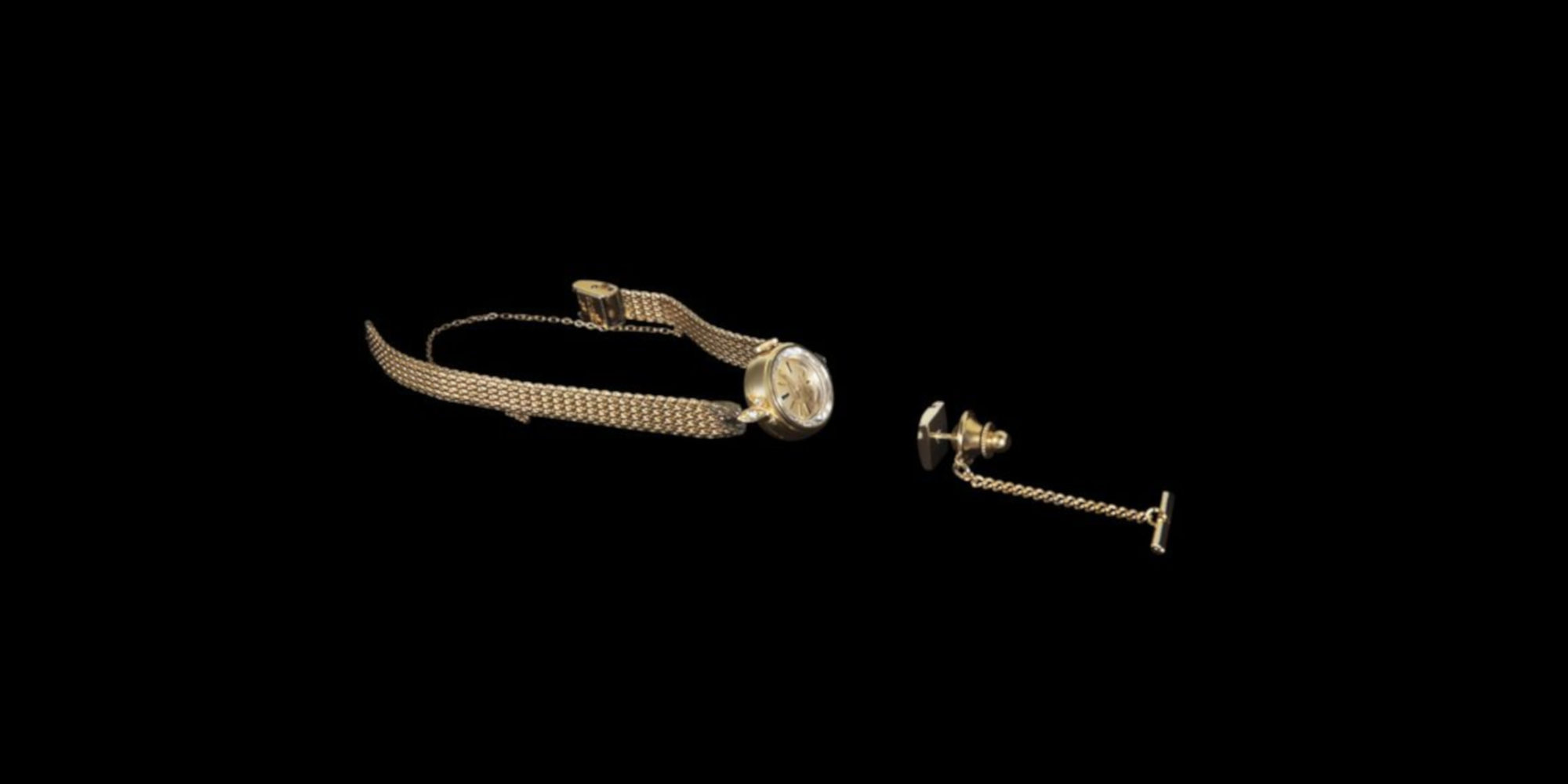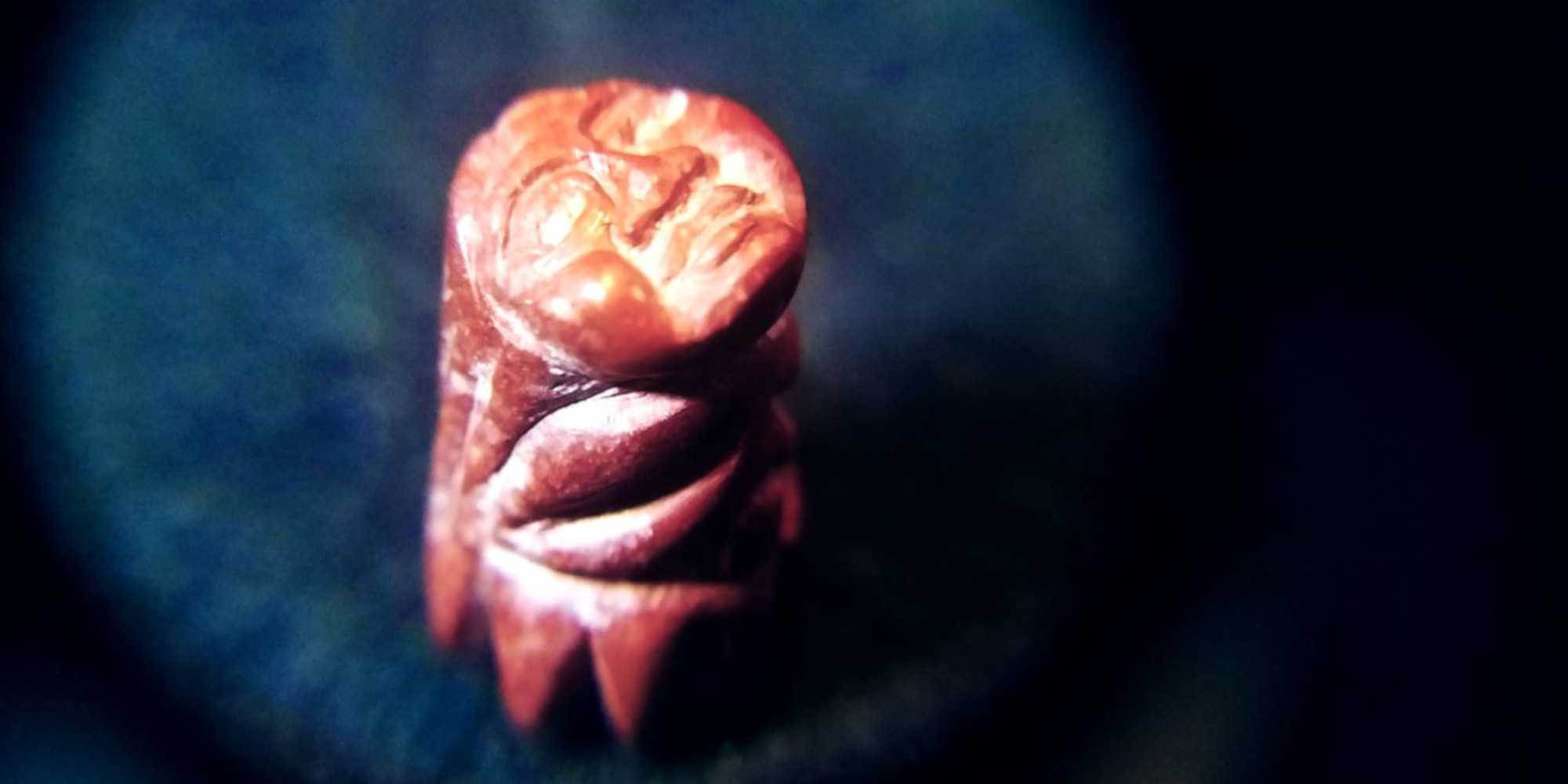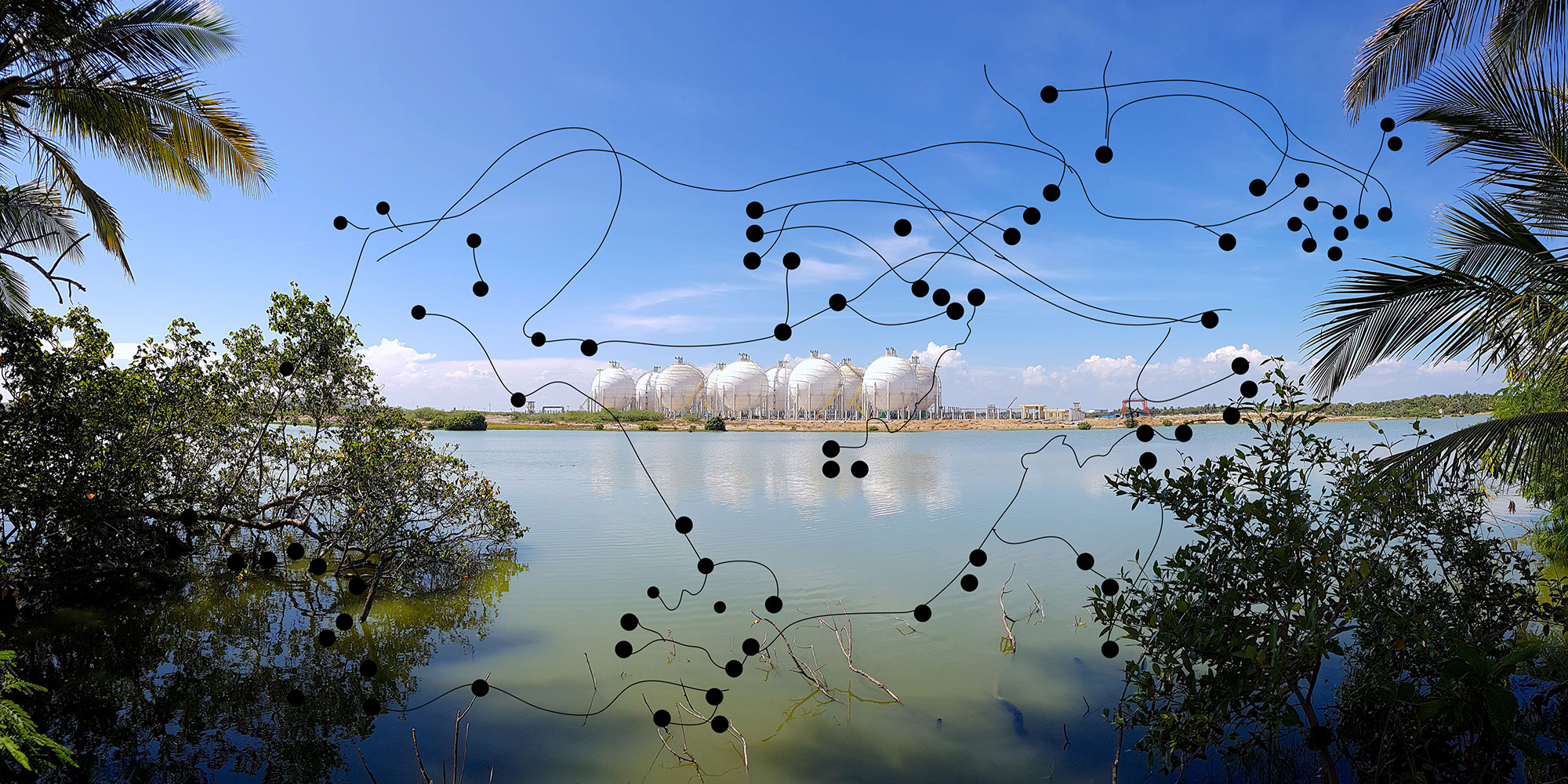This year, we join Ars Electronica In Kepler’s garden online program, a collective effort among the global to reconnect. We created a digital spaceship to share the diverse portfolio from the initiative. Audiences are invited to immerse themselves in this digital world, walk around and encounter each other.
https://spaceship.media.mit.edu
In 2019, the Space Exploration Initiative announced an open call to invite artists to submit artworks for an exciting ISS launch opportunity. After three rounds of reviews, nine groups of artists are selected to be on board Sojourner2020, an international art payload.
The design of Sojourner2020 follows classic spinning space station designs like the von Braun wheel (Konstantin Tsiolkovsky, 1903) and the Stanford torus (NASA, 1975). The spinning, ring-shaped space station is a plausible speculation on space habitats, as it creates an environment of artificial gravity for humans to inhabit. Sojourners in our tiny space habitats are our messages and our proposals to the question: How do we travel beyond the Earth as a collective species? What are the beautiful memories to treasure? What are the lessons to learn, both on Earth and in this universe?
Masahito Ono (JP)
Nothing, Something, Everything
Ono’s project imagines the future of the Earth’s climate and our behavior on this planet. A cylinder-shaped magnet that points back to Earth’s magnetic North and South in absence of gravity, regardless of its location, is a metaphor of longing and belonging. A roll of Minox subminiature camera film containing the 2015 Paris Agreement and other climate documents reveal more about ourselves than the messages Voyager spacecraft could carry. 1cc of Paris Air, sampled at the city where the COP 21 delegates had met, invisible inside a capsule, is never to be unsealed by the people on Earth. By sending these tokens from our world to outer space, and metaphorically exposing and addressing them to future generations or potential extraterrestrials in our universe, his project aims to inspire those who inhabit this planet today.
Project website: cop21.net
Janet Biggs (US)
Finding Equilibrium
Three rocks: a meteorite from the moon, found in the Sahara Desert, is returned to Lunar gravity. A hopeful Mars simulation rock, extracted by a sim-astronaut during a Mars analog mission, finally gets to experience Martian gravity. A crystal from deep underground, holding one of my Grandfather’s last memories as he suffered from Alzheimer’s disease, becomes weightless. This project, realized as both a feature film and as a video installation, interweaves personal stories of loss and transcendence with documentation of scientific research being conducted in the field, resulting in these three rocks being collected, loaded onto a satellite and launched into Earth’s orbit.
Project website: www.janetbiggsfilm.com
Kat Kohl (US)
Memory Chain: A Pas de Deux of Artifact
Memory Chain humanizes a portion of early spaceflight history. Throughout civilization, stories of origin were passed down orally, with some ultimately being transcribed. As a sculptor, I believe that artifacts are imbued with object memory, and are a part of our societal heritage. Having items that daily bore witness to the development of lunar technologies experience the particular gravity they originally planned for, brings their narrative full circle. Inside a lunar gravity pocket, I’ll include two segments of delicate gold chain, one from my grandfather’s tie clip and the other from my grandmother’s watch- both part of their daily professional dress. My grandfather was an Aerospace Engineer, developing engine and chemical propulsions in support of lunar spacecraft missions. He met my grandmother at NASA, where they both worked and fell in love. During orbit, the chains will “dance”- retelling the story of my grandparents’ work romance amidst the Space Race.
Project website: www.katkohl.net
Adriana Knouf (US)
TX-1
The enchanting Earth is too-often made inhospitable to those marked as transgender. To survive we xenomogrify ourselves through social and biological technologies, altering our surfaces, our viscera, our molecular balances. None of us have been to space even if we possess somatic knowledges of deep bodily transformations, necessary experiences for extraterrestrial environments.
TX-1 launches bits of my hormone replacement medications, marking the first-known time that elements of the transgender experience orbit the earth. TX-1 includes a fragment of my spironolactone pill, a slice of my estradiol patch, and a miniature handmade paper sculpture, included to gesture towards the absent-yet-present xenoentities of the cosmos. A symbolic exodus to an orbit high above, the eventual return of TX-1 to Earth is also a sign of resilience, of not being disposed, of coming back to thrive once again.
Project website: tranxxenolab.net/projects/tx-1
Xin Liu (CH) & Lucia Monge (PE)
Unearthing Futures
Unearthing Futures is a collaborative project to decolonize narratives of planetary futures through growing, shaping, and sharing potatoes grown by the artists and local communities in futuristic sculptures, gardens, and dining tables. True Potato seeds of six progenies from the International Potato Center are on board Sojourner 2020. Once the seeds return, the artists will design an experimental garden to cultivate these “space potatoes” with colorful and imaginary shapes. The potatoes will be grown using controlled-environment agricultural systems and eventually become messengers of a diversity of visions of the future. Through the activity of collective food sharing people are encouraged to share recipes from their places of origin and exchange narratives of the future rooted in their local communities and heritage.
Project website: www.unearthingfutures.org
Andrea Ling (CA)
Abiogenetic Triptych
Abiogenetic triptych is a reflection on the divergent possibilities that protocells, though to be the chemical proto-origins of life, could have taken without the rule of gravity governing evolution. At each gravity level of Sojouner 2020 different ratios of inorganic salts – copper sulfate and potassium ferricyanide – are mixed together after launch to form protocell compounds. The resulting precipitate membranes, formed under conditions of differing osmotic pressures and differing gravities, will give a glimpse of how the first inklings of life may have formed under these interstellar conditions. Upon return to earth, the precipitate morphology and material characteristics will be used as prompts for synthetic cell designs and imaginary creatures.
Project website: andreasling.com/abiogenetic-triptych
Erin Genia (US)
Canupa Iŋyan: Falling Star Woman
Carved from the traditional Dakota material of canupa iŋyan/ pipestone, Canupa Iŋyan: Falling Star Woman depicts the legend of a star gazing young woman who travels to space, marries a star person and gives birth to a star child. Over time, she misses her family, friends, and her work as a plant medicine healer. She decides to leave her home in the stars and return to her people on earth. Using the thread of her woven dress as a rope, she climbs down from the stars. However, the thread is not long enough. She lets go and tumbles down to earth as a wakaŋwohpa/ falling star. The carving shows the moment she is transformed into a falling star. As a sacred material, this piece was prepared for its journey in orbit through ceremony. It represents a symbolic prayer for peace and for the self-determination of Indigenous peoples all over the globe.
Project website: eringeniaportfolio.blogspot.com/2020/03/canupa-iyan-falling-star-woman.html
Luis B. Guzmán (CH)
Bioarchitectures
Guzman’s project looks to critically explore the possibility of expanding terrestrial life outside the planet. The question Guzmán is raising is about the implications that gravity has over the evolutionary process of life. The development of living organisms on Earth has been capable of a great range of adaptation, covering a diversity of ecological niches and responding to multiple variables, but gravity has been a constant during the entire process of evolution.
With this in mind, the artist will send a set of diatoms of the Phaelodactylum Tricornutum type, which will be exposed to martian and zero microgravity on board the ISS. Diatoms are responsible for the production of 30% of terrestrial oxygen on earth and have a silica structure that allows them to better resist UV radiation in space. The strain Phaelodactilum Tricornutum is susceptible to generate physical variations in the silica structure. Changes in Ph and carbon availability can determine if the diatoms take a fusiform, triradiate or an oval morphology. The project seeks to explore if gravity can affect morphological transformations compared to a ground control. In Guzmán´s view, the colonization of extraterrestrial habitats must be understood as an evolutionary and transformative process, where life as we know it will be dramatically changed, giving origin to entirely new evolutionary lines. In his vision, entire new ecosystems will emerge from a combination of biological adaptation and biotechnological design, changing the way all species including humans look today.
Project website: www.guzmanluis.com/bioarchitectures
Henry Tan (TH)
Pearl of Lunar
Pearl of Lunar is a continuation of the project titled The Merchants Trinity which explored infrastructural desire and the futurity of Belt-and-Road Initiatives as seen through wealth accumulation, labor infiltration, and geopolitical control. But also, more ephemerally, the affective meshwork of greed and possessiveness that functions at the level of the individual and corporate entities. Through researching unfinished projects such as the Kra Canal, Space Technology Roadmap and Digital Belt and Road, we map complex relationships between China and the rest of the world. Departing from a motif of the pearl as a signifier of ambitious strategies and predatory tendencies in the oceanic sphere,
Pearl of Lunar portrays both the ancient and future ambitions of the project of the historic Silk Road. The Synchrotron light engraves an unfinished roadmap. The pearl of lunar then sends with a rocket to Low Earth Orbit atmosphere while chemical reactions assemble Nacre or Mother of Pearl which ultimately reflects the future roadmap of an Earth-Moon “Special Economic Zone”.
Project website: www.henryandpartners.com/merchants-trinity-2/pearl-of-lunar/
Biography
About the Space Exploration Initiative (SEI)
Space will be hackable. Space will be playful.
With humanity at the cusp of interplanetary civilization, we are actively building the technologies, tools, and human experiences of our sci-fi space future. In doing so, we build on the spirit of the Media Lab, uniting artists, scientists, engineers, and designers to build a real-life Starfleet Academy (inspired by the iconic institution from Star Trek ). We are grounded in the academic excellence of MIT, while leveraging the provocative, creative, and futuristic technology expertise at the Media Lab. The Space Exploration Initiative supports 25+ research projects, regular parabolic flights, suborbital and orbital launch research deployments, and a team of 50+ students, staff, and faculty.
We are creating and deploying space technologies that envision a bold and culturally rich “new space age,” from astro-bacteria wearables, to open-access and shareable cubesat constellations, to musical instruments for our space voyages, to floating space habitats, to advanced zero-gravity 3D printing. The philosophy of “democratizing access to space exploration”—bringing moonshots and starshots into the purview of hackers and makers—courses through our work, and guides both our research platform and our extensive STEAM outreach efforts.
SEI Arts Curator: Xin Liu
Xin Liu (b. 1991, Xinjiang/China) is an artist and engineer, whose works range from performances, apparatus, installations to scientific experiments and academic papers.
In her practice, Xin creates experiences and artifacts to measure and modify the distance and tension between personal, social and technological spaces. Xin is currently the Arts Curator in Space Exploration Initiative in MIT Media Lab, a member of New INC in New Museum and a resident in Queens Museum Artist Studio program. She is also an artist-in-residence in SETI Institute starting from the fall of 2019. She is recipient of numerous awards and residencies, including the Van Lier Fellowship from Museum of Arts and Design, Huayu Youth Award Finalist, Queens Museum studio program and Pioneer Works Tech Residency. Her projects have received awards in SXSW, FastCoDesign, Core77 and her academic publications were nominated for best papers in ACM conferences. She has shown her work internationally at events and venues including Ars Electronica, Boston MFA, Sundance Film Festival, The Walker Art Center, OCAT Shanghai, ISEA and Music Tech Festival Berlin. As a researcher, Xin has worked in institutions including Microsoft Research NYC & Asia and Google ATAP.
Xin graduated from MIT Media Lab with a master degree in Media Arts and Sciences after her M.F.A from Rhode Island School of Design and B.E from Tsinghua University in Beijing (Measurement, Control Technology, and Instrument).
Artist Bios:
Masahito Ono is a Japanese-born artist who lives and works in New York. He creates works that investigate and represent the process of transformation of nature and human life. His projects examine structures of time, memory, and the production of experience and knowledge by engaging with: archival materials; individual and collective narratives; poetry and history that span cultural and national borders. Ono received his MFA from Parsons School of Design in 2015. Prior to moving to New York, he was an international video journalist working for global media organizations across Asia for a decade. His works have been shown extensively around the world including: Wild, Wild Earth – Ford Foundation Live Gallery, New York (2019); 38th EVA International – Ireland’s Biennial of Contemporary Art, Limerick (2018); Auckland Festival of Photography (2014, 2015); Ping Yao International Photo Festival, China (2013); among many others.
Janet Biggs, a 2018 John Simon Guggenheim Foundation fellow, is an interdisciplinary artist known for her immersive work in video and performance. Biggs’ work focuses on individuals in extreme landscapes or situations, and navigates territory between art and science. Her work has taken her into areas of conflict in the Horn of Africa and to Mars (as a member of crews at the Mars Desert Research Station and Mars Academy USA). Biggs has collaborated with institutions such as CERN and the Instituto de Astrofísica de Canarias as well as with neuroscientists, Arctic explorers, aerospace engineers and a robot.
Biggs has had solo exhibitions and screenings at the Neuberger Museum of Art; SCAD Museum of Art; Blaffer Art Museum; MAC Montréal; Hirshhorn Museum, among others. Reviews of her work have appeared in the New York Times, New Yorker, ArtForum, ARTNews, Art in America, and many others.
Kat Kohl’s research-based practice incorporates her interdisciplinary art/technology background into explorations of boundaries and shifts in spatial realities. She has previously shown work at the Texas Vignette, UT Visual Arts Center, Austin City Hall, Socrates Sculpture Park, BHQFU’s “Last Brucennial”, Galerie Protégè, TEMP Art Space, Trestle Project Space, and AES/Repetti Gallery. She was a 2018 nominee for the Louis Comfort Tiffany Foundation Biennial Award and selected as a 2017 artist-in-residence at A-Z West and Studios at MASS MoCA. She has previously participated in the SOMA Summer, Atlantic Center for the Arts and Gullkistan residencies. Kohl was a speaker on the 2017 SXSWedu panel session “The Art and Science of Spatial Perception”, and her work has been highlighted in the e-flux/Serpentine Gallery AUP Archive. She received her MFA in Sculpture + Extended Media from the University of Texas at Austin and a BA in Art & Art History from Colgate University.
Adriana Knouf (she/her/hers, sie/hir/hirs) works as a xenologist, as an artist-scientist-writer-designer-engineer. She engages with topics such as space art, satellites, radio transmission, non-human encounters, drone flight, queer and trans futurities, machine learning, the voice, and papermaking. She is the Founding Facilitator of the tranxxeno lab (https://tranxxenolab.net), a nomadic artistic research laboratory that promotes entanglements amongst entities trans and xeno. Adriana is also an Assistant Professor of Art + Design at Northeastern University, Boston, MA, USA. She is the author of How Noise Matters to Finance (2016) and numerous other journal articles, book chapters, and conference papers. She exhibits and presents her work internationally in festivals, conferences, and galleries. Adriana has a PhD in Information Science from Cornell University, an SM in Media Arts and Sciences from the Massachusetts Institute of Technology, and a BS in Engineering and Applied Science from the California Institute of Technology.
Lucia Monge is a Peruvian artist with a background in education and art+science collaborations. Her work explores the way humans position ourselves within the natural world and relate to other living beings, especially plants. For the past ten years she has organized Plantón Móvil, a yearly “walking forest” performance that leads to the creation of public green areas in different cities including Lima, London, Providence, Minneapolis, and New York. It has been featured in publications such as MoMA’s Uneven Growth and Global Performance Studies as well as in the popular press including BBC Radio, Elephant Magazine, among other. Monge has shown her work in South America, Europe, and the United States in settings that include the United Nations Climate Change Conference (COP20), the Queens Museum, the Museum of Contemporary Art in Lima, and Whitechapel Gallery, among others. She has received an Eliza Moore Fellowship from the Oak Spring Garden Foundation and a Social Innovation Fellowship from Brown University, alongside grants from institutions such as the Peruvian Ministry of Culture, the Foundation for Contemporary Arts, Rhode Island State Council on the Arts, Rhode Island School of Design, and the Municipality of Lima. She holds an MFA from Rhode Island School of Design and has taught at Brown University and Rhode Island School of Design.
Andrea Ling is an architect and installation artist who works at the intersection of art, fabrication technologies, and biological sciences. Her most recent work focuses on how the critical application of biologically and computationally mediated design processes can move society away from exploitative systems of production to regenerative ones. She was the 2019 Ginkgo Bioworks creative resident exploring how to design the decay of artifacts in order to access material circularity. Andrea is a founding partner of designGUILD, a Toronto-based art collective and a former project lead for Philip Beesley Architect where she worked on a series of international immersive kinetic installations and textiles for Iris van Herpen. She is also a former research assistant and designer for the Mediated Matter Group where she and her teammates won Dezeen’s 2019 project of the year with their research project Aguahoja which will be shown in 2020 at the MoMA and 2021 at SFMOMA. Andrea has a MS from the MIT Media Lab and a M.Arch from the University of Waterloo with a background in human physiology from the University of Alberta.
Erin Genia (Sisseton-Wahpeton Oyate/ Odawa) is a multidisciplinary artist, educator and community organizer specializing in Indigenous arts and culture. Genia’s work in these areas is focused on creating a powerful presence of Indigeneity in the arts, sciences and public realm to invoke an evolution of thought and practice that is aligned with the cycles of the natural world and the potential of humanity. Genia’s artistic practice merges cultural imperatives, pure expression, and exploration of materiality with the conceptual. Her work has received attention from diverse audiences, and been exhibited nationally and internationally, recently at the Urbano Project in Boston, the US Pavilion at La Biennale Architettura di Venezia 2018, the Harvard Museum of Natural History and the Museum of Northwest Art. Erin has an MS in Art, Culture and Technology from MIT, an MPA in Tribal Governance from the Evergreen State College and studied at Institute of American Indian Arts.
Luis B. Guzmán has a degree in Visual Arts from the University of Chile, with a specialization in Painting. His interest in combining Art and Science led him to the field of bioethics, as a bridge between Sciences and Humanities. In 2012, he obtained a master’s degree in Bioethics shared between the Faculty of Philosophy and Humanities and the Faculty of Medicine of the University of Chile. In 2019 he obtained the title of Master of Fine Arts with distinction in the program of Art, Space & Nature, from the University of Edinburgh. In his career he participates in exhibitions and collective presentations in spaces such as the Museum of Modern Art in New York, the London Design Fair, the Saint Etienne Biennale du Design and the Museum of Contemporary Art in Santiago, Chile.
Henryandpartners is a multi-disciplinary collective based in Bangkok and led by Henri Tan, co-founder of Tentacles Art Initiatives and a member of Freaklab, also in Thailand.
Henryandpartners engages with recent trends and critical debates in participatory art and social practice. Henryandpartners are interested in the erosion of individual beliefs and culturally grounded understanding with regard to contemporary technologies and political ideologies. We ask how political aspirations inflect psychological dispositions and ultimately impact on social proclivities and ideological apparatuses. Our performances and other diverse events explore this.
Pearl of Lunar is our current project and is a collaboration between Henryandpartners with Space Zab Company together with Freaklab, King Mongkut’s University of Technology Thonburi. Teera Chantarojsiri, Mahidol University in Bangkok. Nirawat Thammajak, Suranaree University of Technology in Nakhon Ratchasima. Sukrit Sucharitakul, Chiang Mai University and Manus Sriring with kind support from Thai Jewelry Manufacturer Co.,Ltd., Synchrotron Light Research Institute (BL6a) and Geo-Informatics and Space Technology Development Agency.

